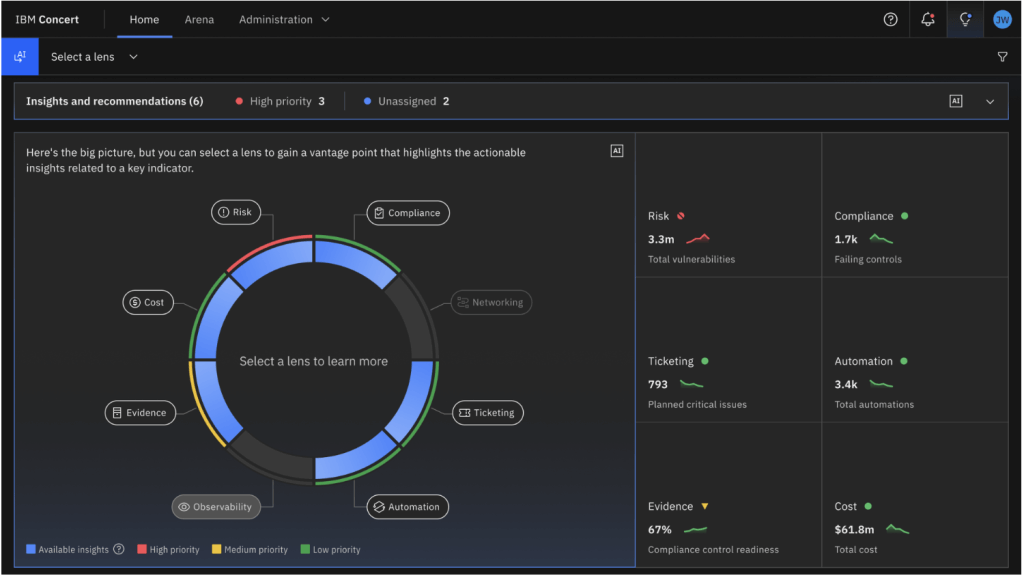IBM CEO Arvind Krishna kicked off the Boston-based IBM Think 2024 this morning — here are some brief notes on key talking points captured from the keynote.
AI is a fundamental technology that will quickly be infused in everything. Current estimates are that it will add an estimated $4 trillion to annual GDP productivity by 2030. $4 TRILLION, one technology. It’s important to note that this is the value accrued to the folks who are using it. That said, we’re still in the nascent stages of AI adoption. Data from IBM’s Global AI Adoption Index found that while 42% of enterprise-scale companies with greater than 1,000 employees shared they have implemented AI, 40% of those respondents shared they are still in the exploratory or experimentation stage. This aligns with our research. There’s much excitement about AI and the possibilities ahead, but the reality is that, for many, there is still work ahead before they are collectively using it in meaningful ways.
Whether unlocking productivity, connecting everything from inventory to supply chain, to front end of house, to helping deliver amazing omnichannel customer experiences — AI assistants working alongside humans is the path forward. Challenges here include the skills/talent gap, managing data complexity, and the big one: trust. The updates to watsonx assistants are intended to address those challenges.
IBM watsonx Updates
Launched about 10 months ago, IBM watsonx is aimed at helping facilitate the acceleration of AI deployments. Watsonx is a trusted environment where customers can run experiments, play with models, add their own data, and have guardrails to help stay safe. Use cases Krishna highlighted for watsonx include:
- Productivity. Internal dev teams are seeing 60% productivity lift
- Customer experience. Customers are able to use watsonx to process customer needs quickly. One customer realizing a 30% time reduction in tasks, and a significant lift (40%) in customer satisfaction
- Digital labor. It’s expected that 95% of all queries or recall transactions can be handled between automation and AI
IBM watsonx: Open Source, Product & Ecosystem Innovations, All Designed to Drive Enterprise AI at Scale
As the evolution of AI continues at a rapid pace, IBM’s Think announcements about the next iteration of watsonx are not surprisingly focused on helping to make AI more flexible, cost-effective, and open for businesses. Krisna spent some time in the keynote speaking to these updates, including news of the release of a family of Granite models into open source and the launch of InstructLab, in collaboration with Red Hat.
IBM Granite Announcements. With regard to Granite,IBM announced it will open source its branded models which are envisioned to help developers speed innovation and “push the boundaries of what AI can do.” These LLMs range between 3 billion to 34 billion parameters. It’s significant to note that they can get larger, or smaller, over time. Smaller models can be “fit for purpose” which can provide customers with the best of both worlds. Granite already features an impressive 116 programming languages and will also embrace those who have their own languages. Krisna noted this is put under the Apache License so that customers who want to add a skill from their own data and domain knowledge can do that — the Apache license allows them to keep that data to themselves, without it being shared with others. And of course, if they decide they want to share it, they are able to do that.
IBM will be breaking this into a number of different assistants, including:
- watsonx assistant for enterprise Java (coming out this summer)
- watsonx assistant for Z, which allows people with those skills to quickly learn and be productive on the plaform
There’s also an assistant builder so that customers don’t have to rely on IBM for assistance, they can build their own quickly.
It’s anticipated that generative AI will be responsible for between 600 million to a billion new apps being written by the end of this decade. Sprawl, connectivity, and infrastructure are all going to play a role here, which is why bringing AI in IT ops is so key, providing the ability to see what is happening when something goes wrong, etc.
IBM Concert. IBM announced the launch of IBM Concert today, designed to help customers control operations, reduce risk, and manage compliance with generative AI. Concert allows users to control how apps work, providing insight into connected apps and toolsets, helping facilitate streamlining of compliance processes.
With the growth of cloud-native apps expected to go from 531.3 million in 2024 to over a billion by 2028, the amount of data, tools, services, etc., needed to manage this “app sprawl” is significant and the complexity involved is equally significant. Managing the growth in this ecosystem and being able to reliably and efficiently use that data to make business decisions is key.
Powered by ai from watsonx, IBM Concert can do many things, including: generate analyses, visualizations, and recommendations that can speed actions, discover gaps, reduce complexity, streamline ops, boost resiliency, speed innovation, help control costs. This is important as today we see IT leaders and users themselves managing instead of enhancing those applications and so they miss the opportunity to drive innovation and value for the business.
IBM Concert was designed to put the user, in the driver’s seat with insights into how applications really work. It can provide application owners with a detailed understanding of their connected applications and toolsets, so they can find opportunities to streamline compliance processes. Concert should be generally available sometime in June.

IBM Ecosystem News
IBM continues to focus on building out strong alliances and partner ecosystems. Partners include Adobe, Meta, SAP, AWS, Mistral, Palo Alto Networks, Microsoft, Salesforce and the Saudi Data and Artificial Intelligence Authority (SDAIA). This is intended to provide customers with choice and flexibility, bringing third-party models to watsonx and enabling the embedding of watsonx capabilities into gen AI capabilities, helping companies more quickly adopt and scale AI. Briefly, these ecocsystem updates include:
AWS and IBM are bringing Amazon’s SageMaker and watsonx.governance to AWS.
Adobe and IBM are collaborating on hybrid cloud and AI, bringing Red Hat OpenShift and watsonx to the Adobe Experience Platform.
META’s Meta Llama 3 LL M is now available on watsonx.
Microsoft. IBM’s watsonx AI and data platform can now run on Microsoft Azure and is available to purchase through IBM and the business partner ecosystem.
Mistral has partnered with IBM to bring its models to the watsonx platform, which is expected to be available in Q2 of this year.
Palo Alto Networks and IBM have expanded their partnership. I wrote about this yesterday, so for a deeper dive, check out that article: IBM and Palo Alto Networks Join Forces on the Security Front.
Salesforce and IBM hope to make the IBM Granite model series available later this year in the Saleforce Einstein 1 platform, to provide an assist with decision-making for AI CRM use cases.
SAP and IBM are collaborating to help customers accelerate cloud journeys, leveraging RISE with SAP by embedding IBM Watson AI tech into SAP solutions. The Granite Model series is expected to be available across SAP’s family of cloud apps and solutions.
IBM announced the launch of the Saudi Data and Artificial Intelligence Authority (SDAIA), “ALLaM” Arabic model on watsonx, which adds significant language capabilities to the platform as well as the ability to understand multiple Arabic dialects.
IBM and Quantum Computing
It was fitting that Krishna wound down this morning’s keynote talking about quantum computing and the inroads IBM is making on that front. He shared that people have run over the 3 trillion individual experiments on IBM’s quantum systems over the past few years. This illustrates that quantum is no longer a science experiment, it is quickly becoming real. What is the promise of quantum? It’s actually pretty simple: there are problems that classic computers can never solve. Quantum will be able to solve these problems in the next 3 to 5 years.
With so much potential, mostly around AI, but bracketed around hybrid cloud and quantum, there’s much to look forward to ahead.
There’s much news to excited about coming out of IBM Think 2024, stay tuned for our on-demand coverage from our team at theCUBE during the course of the event as well as regular updates from our analyst team on the ground.
Our on-demand coverage of IBM Think 2024 will feature insights from:
- Varun Bijlani, global managing partner of hybrid cloud services at IBM
- Hillery Hunter, CTO of infrastructure and general manager of innovation at IBM
- Ritika Gunnar, GM of data and AI at IBM
- Mohamid Ali, COO of IBM Consulting
- Ruth Sun, global managing director of strategic partnerships at IBM
- Harsh Mantri, product strategy lead at Samsung Electronics America



